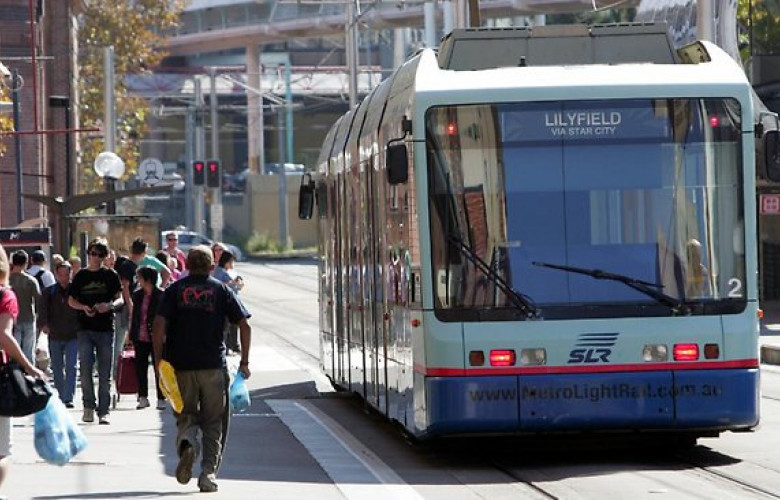How important is local transport to property values?
Contact
How important is local transport to property values?
Being close to public transport is at the top of the wish list for most property buyers, especially in larger cities like Sydney, Melbourne and Brisbane.
Being close to public transport is atop the wish list of most property buyers, especially in larger cities like Sydney, Melbourne and Brisbane.
But just how much value can this add to your property?
Given the variables of each suburb, including demographics, property types and even the prestige of particular postcodes, quantifying proximity to transport can be tricky. But there are plenty of examples a prospective investor can look to.
Certainly, buying slightly further away from a transport line tends to be cheaper. For example, consider the price difference between a unit in North Sydney and nearby Cremorne, on Sydney’s north shore. A three bedroom unit in North Sydney sells for about $1.5m, and just three kilometres away in Cremorne a three bedroom unit sells for about $1.2m, as per Domain Group figures.
While a seller could argue that Cremorne has better pedestrian access to the harbour, it doesn’t have a train station like North Sydney, and this is clearly a factor in the price difference. Notably, both suburbs have good bus links and express road lanes, as well as numerous schools, shops and cafes.
Close to town
Distance from the CBD also impacts prices, even when comparing two suburbs on the train line. For example, Toowong in Brisbane is just six kilometres from the CBD and the median house price there is $790,000, according to REA Group. By contrast, Coopers Plains is fourteen kilometres from the CBD and the median house price there is $535,000, says REA Group.
Both areas have train stations and are experiencing high demand from prospective buyers, according to REA Group.
Furthermore, a new train link can promote interest in an area that was previously underappreciated or perceived to be too far away. For example, Redcliffe, about 40 kilometres from Brisbane’s CBD, is set to open a $1bn commuter rail link, which is likely to increase the local population and improve its property market, in turn.
Both median unit and house prices there have been steadily on the way up since 2014, based on trend numbers from REA Group. Redcliffe’s current property median is $410,000, says Domain Group.
Director of property research firm and buyers’ agency Hotspotting.com.au, Terry Ryder says that of the top economic drivers in property, transport infrastructure is arguably the most powerful.
“The three Rs of real estate – roads, rail links and river crossings, including bridges and tunnels, can transform the appeal of a location by improving accessibility,” says Ryder. “Areas previously unattractive to buyers because of the distance, in terms of travel times to key destinations like CBDs or shopping precincts, can be revolutionised by a new motorway connection, upgraded train services or a new bridge.”
Making light work of commuting
Sydneysiders know the impact of new infrastructure all too well, with light rail links popping up all over the place and sparking interest in suburbs that perhaps once flew below the radar. The inner west is just one area that’s prospered due to revamped transport lines.
The Dulwich Hill – Lilyfield light rail extension, for example, was announced by the state government in 2010, when the median house price in Dulwich Hill was $820,000, as per REA Group. The new line began operating in 2014, by which time the median price had jumped to $1.1m.
Meanwhile, Geelong, a city that’s about an hour’s drive south-west of Melbourne, has similarly benefited from a new regional rail link. As a result, Geelong’s median house price has risen from $475,000 in 2010 to $605,000 in 2015, says REA Group. Indeed, Geelong is the highest ranked suburb on Hotspotting.com.au’s list of infrastructure ‘hotspots’ for 2016.
Considering tenant needs
Renters might especially look for homes close to transport lines, and this should be top of mind for investors. Melbourne based buyers’ advocate Cate Bakos says that buying within walking distance of either tram or train lines can help investors secure quality tenants as well as a property with the potential for future capital growth.
“As our population increases, cities expand, roadways become more congested, and cost of fuel and parking increase, railway accessibility will become more highly prized in all of our city suburbs,” she says. “We all value our time like never before, so much so that we will make sacrifices to shorten our own commuting time.”
Bakos says that both buyers and tenants gravitate toward property that’s within one kilometre of a train station, and this heightened demand helps those properties financially outperform ones that are further away.
“The key thing to be mindful of is being too close for comfort – no resident wants to be reminded that they’re on a train line every few minutes,” says Bakos. “Also parking is important. Nobody wants their street congested with rail commuter cars if they’re neighbouring a station.”
In regional areas, however, where commuting by car isn’t as problematic, transport links aren’t critical, she says. Meanwhile, lower socio-demographic areas may be more reliant on bus routes, so it’s important to profile each area you’re looking at based on specific transport needs, says Bakos.
By JP Pelosi.
See also:
Bigger (infrastructure) not necessarily better for investors





